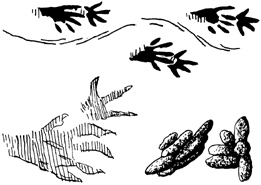Muskrats in South Carolina
Biology
Muskrats are polygamous, begin breeding in early March, and continue throughout the summer. Populations can build up quickly, as a pair of muskrats can produce four to five litters each year, with five to seven young per litter.

Muskrats are active mostly at night, but they may be out and about during the early morning and later evening hours as well. Primarily vegetarians, they eat plants such as cattails, water lilies, bulrushes, smartweed, water potato and willows, and may also eat corn, carrots, apples and other cultivated plants. Muskrats will occasionally eat meat in the form of freshwater mussels, clams, frogs and crayfish. Fish that are found dead will be scavenged and, in rare instances, a muskrat may catch one of the slower swimming rough fishes. It is a common misconception that muskrats pursue and capture many of the gamefish species. It is simply too much work for a creature that is mainly a vegetarian.
In South Carolina, muskrats sometimes build small huts out of marsh grasses, leaves, small sticks, etc. However, it is more common for them to dig bank tunnels and dens. The entrances to bank dens are generally 1 to 2 feet underwater and slope upward to the living quarters above water level.
View muskrat information in PDF format (Adobe PDF - file size 454KB)
The file above is provided in Adobe® Acrobat® (PDF) format. Adobe® Reader® is required to open thise file and is available as a free download from the Adobe® Web site. 
